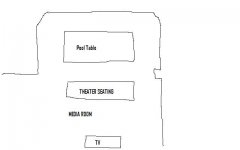I'm new to the forum and I'm looking for some advice on buying my first pool table. I'll consider myself a beginner that is looking for some fun family time with my two boys(10 & 12) and occasional friends. I'll be placing it in the basement that is open but the designated space is 17.4" in length and 13.3" in width. (The width is not restricted per say, there are no walls on one of sides. It just gets into the media room that will have some couch seating). I've been looking for a couple of weeks now and I've seen some used/new tables. My budget is $2,000 for the complete setup(table,accessories and setup by a professional installer). I would greatly appreciate some advice and/or recommendations for tables and installers.
Thank you in Advance
Thank you in Advance
Last edited:
